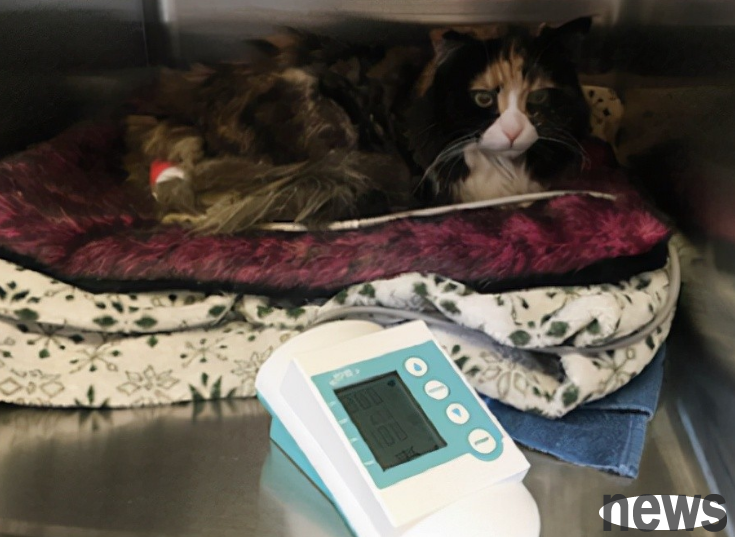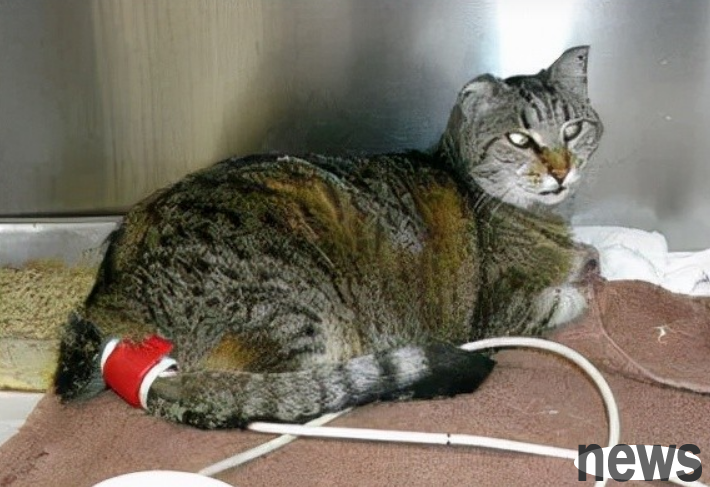I believe everyone is aware of the "three highs". Currently, with the improvement of living conditions, many middle-aged and elderly people have three highs, which can only be controlled by adjusting their diet and daily monitoring. Nowada...
I believe everyone is aware of the "three highs". Currently, with the improvement of living conditions, many middle-aged and elderly people have three highs, which can only be controlled by adjusting their diet and daily monitoring. Nowadays, not only middle-aged and elderly people will suffer from the three highs, but cats will also suffer from the three highs~
Cats will also suffer from the "three highs"! Don't ignore these signs.
However, in fact, not only two-legged beasts, cats also have "three highs".

Cats can also suffer from "three highs"! Don’t ignore these signs
So, which cats are more likely to get “three highs”?
Do cats only get sick when they are old?
How to detect "three highs" in kittens earlier?
Cats can also suffer from "three highs"! Do not ignore these signs
High blood pressure
There are two types of hypertension: primary and secondary. Secondary hypertension is more common in cats, such as hypertension caused by cats suffering from chronic kidney disease (CKD), hyperthyroidism and other diseases.

Some cases where the underlying cause is not identified will be classified as essential hypertension. The proportion of essential hypertension is about 13-20%, and most of it is hereditary.
Symptoms& Problems that may cause?
Like humans, elevated blood pressure can cause damage to many organ systems in the body, such as:
Eyes, blindness and retinal hemorrhage due to retinal detachment.
Heart, arrhythmia, heart murmur, left heart enlargement, heart failure.
Kidney, impairment and loss of renal function.
Brain, depression, disorientation, epileptic seizures, gait abnormalities, etc.

If you find that your cat has any of the above obvious abnormalities, it is recommended that you seek medical attention immediately. Because just like people, severe high blood pressure can be life-threatening, and kittens can’t let it go!
What kind of kitten needs special attention?
As mentioned above, if your kitten has chronic kidney disease, hyperthyroidism, diabetes, or is over 7 years old, you should pay special attention to regular blood pressure monitoring.
How to diagnose?
If conditions permit, you can go to a hospital that specializes in cardiology for examination, as it is more professional and skilled in instruments and doctors.
Generally, general hospitals can also measure cat blood pressure. You can communicate with the hospital front desk in advance.
Because stress has a greater impact on cats' blood pressure...
Therefore, when going to the hospital, you should try to reduce the cat's stress as much as possible, such as bringing some small blankets where the cat often lies down, spraying some pheromones, etc.
Can a home sphygmomanometer used by humans measure a cat’s blood pressure?
Cats going out may cause unavoidable stress, causing the blood pressure to rise as a result of the measurement. Therefore, if the cat's blood pressure can be measured in a familiar home environment, it will be relatively more accurate.
However, although the thermometers used by us and cats are common, the devices used by humans to measure blood pressure are not suitable for cats.
Treatment
The treatment goal for hypertensive cats is to control systolic blood pressure below 140mmHg and diastolic blood pressure below 90mmHg.
Blood pressure needs to be monitored regularly, as well as the side effects of drugs (antihypertensive drugs) and the progression of the disease.
Secondary hypertension requires finding the underlying cause. Treating the underlying condition can often control high blood pressure (especially in cats with hyperthyroidism).
Special eye drops may be needed when eye disease is present. Whether damaged vision can be restored depends on the extent of eye bleeding.
In addition, cats will also use antihypertensive drugs to lower blood pressure, such as amlodipine, benazepril, etc., just like people. Doctors need to choose according to the specific conditions of the cat.
When conditions permit, it is recommended to monitor blood pressure during regular physical examinations for elderly cats (over 5 to 7 years old). Because if not discovered in time, some damage is irreversible.
Cats can also suffer from "three highs"! Don’t ignore these signs
Simply put, it is a disease in which there is too much fat (lipid) in the blood of animals.
The main lipids typically found in the blood are triglycerides and cholesterol, and when levels of one or both are elevated in the blood, cats are considered to have hyperlipidemia.
Similarly, there are two types of hyperlipidemia in cats: primary and secondary.
Primary hyperlipidemia: a rare genetic disease that affects blood lipids.
Secondary hyperlipidemia: Due to other diseases, too much lipid cannot leave the blood, resulting in elevated blood lipid levels.
Symptoms& Problems that may cause?
Hyperlipidemia may be associated with a series of atypical, non-specific clinical symptoms:
Vomiting, diarrhea, loss of appetite, lethargy, weight changes, skin lesions, epilepsy and other neurological problems, increased thirst and/or urination, etc.
When a cat has three symptoms, it must not be ignored, and measures must be taken in time.